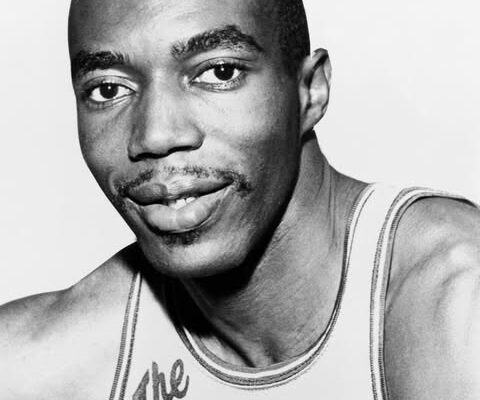Honoring a Warriors Legend: Marking the Legacy of Nate “The Great” Thurmond on His Eighty-Fourth Birthday.
Nate “The Great” Thurmond is a name etched into the rich history of professional basketball and forever embedded in the heart of the Golden State Warriors franchise. On what would have been his eighty-fourth birthday, it is fitting to honor the legacy of a man who was not only one of the game’s most imposing and skilled big men but also a symbol of humility, toughness, and quiet excellence. Thurmond’s journey through the game of basketball was marked by strength, resilience, and a steadfast commitment to his craft—qualities that endeared him to fans and peers alike, and which ensure his name continues to resonate in the lore of the NBA.
Born on July 25, 1941, in Akron, Ohio, Nate Thurmond’s path to greatness was shaped by a deep work ethic and a love for the game that manifested early in his life. At Akron’s Central High School, Thurmond began to hone the skills that would later define his Hall of Fame career: rebounding dominance, defensive tenacity, and an innate understanding of the game’s rhythm. His high school career, though somewhat overshadowed by his friend and future NBA star Gus Johnson, set the foundation for what would become an iconic tenure in college and professional basketball.
Thurmond chose to play college basketball at Bowling Green State University, where he quickly became a standout. During his three years with the Falcons, he averaged more than 17 points and 17 rebounds per game—a testament to his dominance in the paint. His performances at Bowling Green caught the eye of NBA scouts, and in the 1963 NBA Draft, he was selected third overall by the San Francisco Warriors. It was in the Bay Area that Thurmond would spend the prime of his career, becoming a legend in the franchise’s annals and a towering presence in the league.
When Nate Thurmond entered the NBA, he was thrust into the spotlight alongside Wilt Chamberlain, one of the most dominant players in basketball history. Initially serving as Chamberlain’s backup, Thurmond used the opportunity to study one of the game’s greats, learning through observation and internalizing the nuances of elite post play. When Chamberlain was traded to the Philadelphia 76ers in 1965, Thurmond stepped into the starting center role and quickly emerged as a force in his own right. His impact was immediate and profound—his presence in the paint changed the trajectory of games, and his opponents quickly learned that nothing came easy when Nate was near the basket.
Thurmond’s career statistics only begin to tell the story of his greatness. Over 964 career games, he averaged 15.0 points and 15.0 rebounds per game, but numbers alone cannot fully capture his influence. He was a seven-time NBA All-Star and a five-time All-Defensive Team selection. Perhaps more impressive than any accolade, however, was the respect he earned from his peers. Kareem Abdul-Jabbar, a fellow Hall of Famer and widely considered the greatest center in the history of the NBA, once remarked that Thurmond was the toughest defender he ever faced. This kind of praise, coming from a player of Kareem’s stature, underscores Thurmond’s incredible defensive prowess and physicality.
Thurmond was the embodiment of the “old-school” center—a gritty, physically dominant, and defensively elite anchor who played with relentless energy. At 6-foot-11 and 225 pounds, his strength was matched only by his agility. He had the footwork of a much smaller player and used it to patrol the paint with surgical precision. His shot-blocking ability, often underrepresented due to the NBA not officially tracking blocks until the latter part of his career, was elite. Many contemporary accounts credit Thurmond with multiple seasons averaging over three blocks per game, a rare feat even in today’s game where athleticism is prized above all.
One of the most historic moments of Thurmond’s career came on October 18, 1974, when he became the first player in NBA history to record a quadruple-double. Playing for the Chicago Bulls against the Atlanta Hawks, Thurmond posted 22 points, 14 rebounds, 13 assists, and 12 blocks. The feat, incredibly rare and accomplished only a few times since, demonstrated the breadth of his skills and his ability to influence every facet of the game. It was a milestone that not only highlighted Thurmond’s versatility but also his profound impact on both ends of the floor.
While his time with the Warriors (both as the San Francisco and Golden State iterations) was the most defining part of his career, Thurmond also played stints with the Chicago Bulls and Cleveland Cavaliers. His tenure in Cleveland, where he was a key veteran presence on a young playoff team, brought his career full circle back to his home state of Ohio. In 1977, after 14 seasons in the league, Thurmond retired, leaving behind a legacy of relentless effort and quiet greatness.
Retirement did not sever his connection to the game or the franchise that had become his second home. Nate Thurmond remained a vital presence in the Warriors organization, working in community relations and often seen courtside at games, supporting the next generations of players. He became a beloved ambassador for the sport, always ready with a kind word or story, forever humble despite his accolades. His number 42 jersey was retired by the Warriors in 1978, a lasting tribute to a player who had given so much to the team and its fans.
In 1985, Thurmond was inducted into the Naismith Memorial Basketball Hall of Fame, an honor that cemented his place among the game’s elite. Yet for many fans and players, it wasn’t the trophies or statistics that defined Nate’s legacy. It was his character—his quiet leadership, his dignity, and his unwavering commitment to excellence. He wasn’t flashy or attention-seeking. He let his play do the talking. He was the kind of player who made teammates better, who lifted entire franchises with his presence, and who carried himself with the kind of class that made him a role model far beyond the court.
Nate Thurmond passed away on July 16, 2016, just nine days before his seventy-fifth birthday, after a brief battle with leukemia. The outpouring of love and remembrance from the basketball world was immediate and heartfelt. The Warriors honored him with a moment of silence, and tributes poured in from legends of the game who recognized not only his contributions as a player but his kindness and generosity as a man. For a franchise that has seen the likes of Rick Barry, Chris Mullin, Stephen Curry, and Klay Thompson wear its colors, Thurmond remains one of the most revered figures in team history.
On what would have been his eighty-fourth birthday, we are reminded not just of the highlights and statistics, but of the man himself. In an era increasingly defined by highlight reels and viral moments, Nate Thurmond’s legacy is one of substance over spectacle. He represented a time when effort, defense, and humility were paramount—when greatness was not defined by showmanship but by impact. His name may not be as frequently mentioned in popular discourse as some of his contemporaries, but among true students of the game, his status is legendary.
The modern Warriors, who have enjoyed a renaissance over the past decade, continue to carry the torch lit by legends like Thurmond. While the style of play has evolved, the franchise’s foundation remains grounded in the values that players like Nate embodied—teamwork, dedication, and a commitment to excellence. Every time the Warriors take the floor, they do so in the shadow of greatness, and that shadow stretches back to the towering figure of Nate Thurmond patrolling the key, defending with honor, and playing the game the right way.
As fans, historians, and admirers reflect on his legacy today, there is a quiet sense of reverence. Nate Thurmond’s life was a testament to what can be achieved through hard work, humility, and resilience. He was the ultimate teammate, the ultimate professional, and a true steward of the game. He showed that greatness isn’t always loud. Sometimes, it’s found in the steady rhythm of defensive stops, in boxing out for a crucial rebound, or in setting a hard screen to free a teammate. Sometimes, it’s found in the willingness to do the little things that win games, even if they don’t make the highlight reel.
In honoring Nate Thurmond on his eighty-fourth birthday, we are not merely celebrating an individual; we are honoring a standard—a way of approaching the game and life with integrity, strength, and quiet greatness. His story remains a blueprint for those who aspire not just to play, but to contribute meaningfully, to uplift others, and to leave behind something greater than themselves.
Nate “The Great” Thurmond was more than a basketball player. He was a cornerstone of a franchise, a giant among men, and a legend whose legacy endures in every block, every rebound, and every act of selfless play. Today, and always, we remember him not just for how he played, but for who he was.



